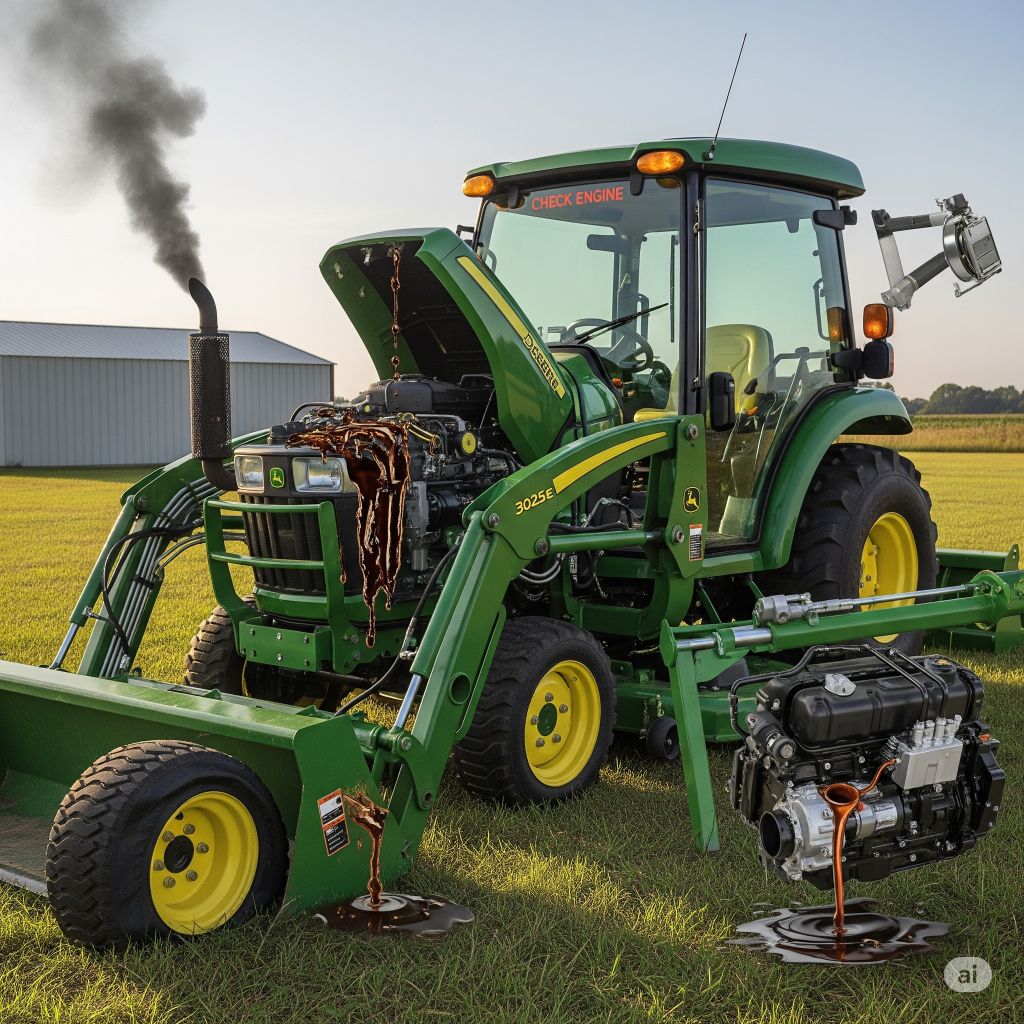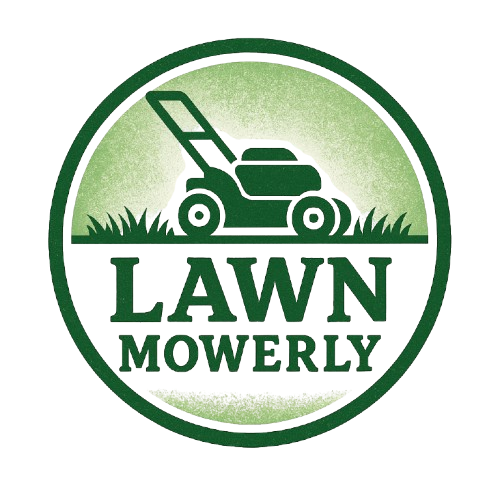
The John Deere 3025E is one of the most popular compact utility tractors in the 3 Series lineup. Built for residential, hobby farm, and small-scale agricultural use, it offers a balanced mix of power, maneuverability, and versatility. However, like any machine, the 3025E isn’t without its quirks. In this detailed guide, we’ll walk you through the common problems, troubleshooting tips, practical fixes, technical specs, and FAQs to help you get the most out of your 3025E.
Overview of the John Deere 3025E
- Model: John Deere 3025E
- Type: Compact Utility Tractor (CUT)
- Horsepower: 24.7 HP
- Transmission: 2-range hydrostatic (HST)
- PTO Horsepower: 19.4 HP
- Fuel Type: Diesel
- Category: 3E Series
- Primary Uses: Landscaping, gardening, small-scale farming, loader work, mowing, and light construction.
Common John Deere 3025E Problems and Fixes
1. Hydrostatic Transmission Issues
Symptoms:
- Sluggish movement
- Jerky or inconsistent acceleration
- Poor performance on slopes
Causes:
- Low or contaminated hydraulic fluid
- Dirty hydrostatic filter
- Air trapped in lines
Fixes:
- Check and top off hydraulic fluid
- Replace transmission filter (usually every 200 hours)
- Bleed the hydraulic system
- Avoid overloading the tractor or using on steep inclines for long periods
Tip: Always use John Deere Low Viscosity HY-GARD fluid or equivalent to ensure proper lubrication.
2. PTO Not Engaging Properly
Symptoms:
- PTO lever moves but nothing happens
- Mower or implement won’t spin
Causes:
- Faulty PTO switch
- Worn clutch or linkage
- Blown fuse or relay
Fixes:
- Check PTO switch and replace if faulty
- Inspect and adjust PTO linkage
- Test electrical circuit for blown fuses or bad connections
- Clean and lubricate moving parts
3. Engine Hard to Start or Won’t Start
Symptoms:
- Cranks but doesn’t fire
- Requires multiple attempts
- White smoke on startup
Causes:
- Dirty fuel filter
- Air in the fuel line
- Faulty glow plugs or fuel solenoid
- Weak battery
Fixes:
- Replace fuel filter regularly (every 200 hours or annually)
- Prime the fuel system
- Test glow plugs with a multimeter
- Charge or replace battery
Pro Tip: Use winter-grade diesel and anti-gel additives in cold climates.
4. 4WD Not Engaging or Disengaging
Symptoms:
- Front wheels not pulling
- Grinding noise while switching modes
Causes:
- Stuck 4WD linkage
- Low gear oil in front axle
- Mechanical damage in the front differential
Fixes:
- Grease and free up linkage
- Check and refill front axle oil
- Have dealer inspect gears if mechanical fault is suspected
5. Overheating
Symptoms:
- Temp gauge in red
- Engine shuts down unexpectedly
- Coolant overflow
Causes:
- Clogged radiator or screen
- Low coolant level
- Bad thermostat or water pump
Fixes:
- Clean radiator fins and air screen
- Refill coolant to recommended levels
- Test and replace thermostat or pump as needed
Preventative Tip: Blow out radiator debris weekly if using in dusty fields.
6. Hydraulic Lift or Loader Not Working Properly
Symptoms:
- 3-point hitch won’t lift
- FEL (Front-End Loader) slow or jerky
- Implements don’t stay in position
Causes:
- Low hydraulic fluid
- Clogged hydraulic filter
- Worn pump or valve block
Fixes:
- Top off hydraulic fluid
- Replace filter and bleed system
- Inspect SCV (Selective Control Valve) for wear or blockages
7. Battery Drain or Electrical Faults
Symptoms:
- Battery discharges overnight
- Lights flicker or don’t work
- Error codes or no crank
Causes:
- Faulty ignition switch
- Shorted wiring
- Corroded terminals
Fixes:
- Clean and tighten all battery terminals
- Inspect wire harness for rodent damage or rubbing
- Replace ignition switch if it draws current when off
John Deere 3025E Specifications
| Category | Details |
|---|---|
| Engine | Yanmar 3TNV88 (Diesel, 3-cylinder) |
| Horsepower | 24.7 HP @ 3200 rpm |
| PTO HP | 19.4 HP |
| Transmission | 2-range Hydrostatic (HST) |
| Fuel Capacity | 6.3 gallons |
| 3-Point Hitch | Category 1, with position control |
| Lift Capacity | 1356 lbs at lift points |
| Weight | 1,565 lbs (tractor only) |
| Wheelbase | 61 inches |
| Turning Radius | 8.7 feet (without brakes) |
| Front Axle | MFWD (Mechanical Front-Wheel Drive) |
| Hydraulics | Open center, dual pump (5.3 gpm total) |
| Tires | R4 Industrial, R1 Ag, or R3 Turf |
Attachments and Compatibility
The John Deere 3025E is compatible with a range of useful attachments, including:
- Front-End Loaders: 300E Loader (standard), quick attach bucket
- Backhoe: 260B Backhoe
- Mowers: Rotary cutters, grooming mowers
- Box Blades, Tillers, Snow Blowers
- Pallet Forks, Bale Spears, Grading Scrapers
Note: All attachments should match the tractor’s Category 1 hitch and weight limits.
Maintenance Tips for Longevity
- Oil Change Interval: Every 200 hours or annually
- Hydraulic Filter & Fluid: Every 400 hours
- Air Filter: Check and clean every 50 hours
- Fuel Filter: Every 200 hours
- Battery Maintenance: Keep terminals clean and check electrolyte levels
- Greasing: Every 10 hours for loader and 3-point pivot points
Keep a maintenance log to track fluid changes, inspections, and part replacements.
John Deere 3025E Pros and Cons
Pros
- Reliable Yanmar engine
- Simple and rugged hydrostatic drive
- Easy to service and maintain
- Great for loader and mower work
- Versatile with many attachments
- Compact but powerful for the size
Cons
- No cruise control on base model
- Lift capacity could be higher
- Hydrostatic whine can be loud
- Lacks deluxe operator station found in 3R series
- Limited electronics – no advanced display or diagnostics
John Deere 3025E FAQs
Q1. What is the difference between 3025E and 3025D?
- The 3025E has a hydrostatic transmission, while the 3025D uses a gear transmission. E is easier to operate; D offers more control for experienced users.
Q2. Can I run a 5-foot rotary cutter on the 3025E?
- Yes, a 5-foot cutter is ideal for this tractor. Stick to light or medium-duty models under 500 lbs.
Q3. What is the lifting capacity of the front-end loader?
- The 300E loader can lift about 1,220 lbs to a height of ~78 inches.
Q4. Can it handle a backhoe?
- Yes, the 260B backhoe is designed for the 3025E. Just make sure you use a ballast box or other counterweight for stability.
Q5. Is it powerful enough for tilling 5 acres?
- For occasional tilling or light fieldwork, yes. For repeated deep tilling or heavy clay soils, you may want to look at the 3038E or 3039R.
Final Thoughts
The John Deere 3025E is a dependable, capable machine for property owners, landscapers, and small farmers. While it does have a few common issues—mostly tied to hydrostatic performance, electrical glitches, and hydraulic maintenance—most are manageable with regular upkeep and basic troubleshooting.
Its versatility, ease of use, and strong dealer support make it a top choice in the compact utility segment. Whether you’re mowing, digging, or lifting, the 3025E holds its own and then some.
If you’d like a downloadable checklist for maintenance, or want a comparison between the 3025E and 3032E, let me know and I’ll create that too.

I’m David man behind Lawn Mowerly; I’ve been dealing with lawnmowers and Tractors with my father since I was a kid. I know every make and model and what each one is capable of and love helping people find the perfect equipment for their needs.
